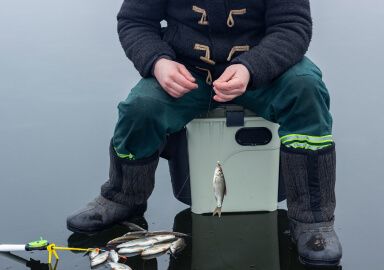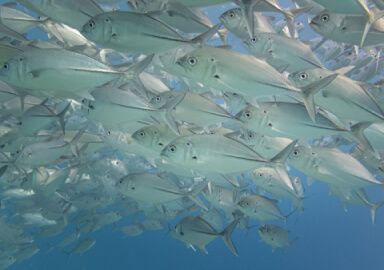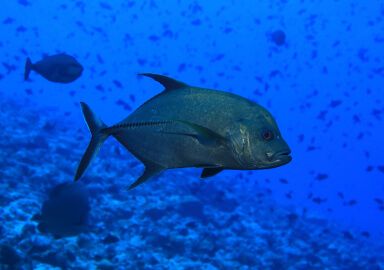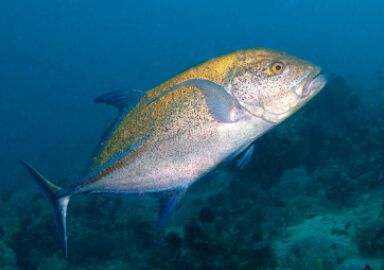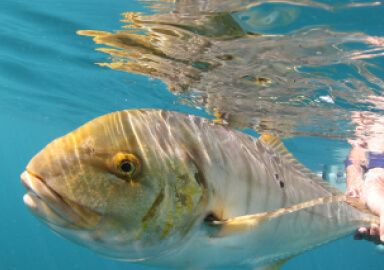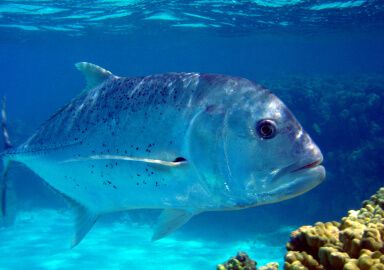Giant Trevally
The giant trevally, a.k.a giant kingfish, is the top fish predator and prime target of sports anglers on many of the reefs and shores of much of the world’s warmer oceans.
View 39 listings
39
listings
–
price starting from
11
countries
–
to the nearest trip
Where and When?
Giant trevally are distributed in the warmer water areas of the Indian and Pacific Oceans from the eastern shores of Africa up to and including the Hawaiian Archipelago. For some reason the giant trevally are generally absent from the Pacific Ocean east of Hawaii but, around these islands, they are common and a focus of many game and also commercial fishers. This species is replaced by the j jack crevallein warm water areas of the Atlantic Ocean. Around the shores of much of Australia and Eastern Africa the giant trevally is a priority target of sport anglers while around India and the Far East it is more a focus of commercial fishing.
This is mostly an inshore, fairly shallow water, species and can also occasionally be found far up rivers and in relatively isolated coastal lakes. Summer is when the species feeds most actively but it does occasionally feed in cooler times though usually not very “enthusiastically”. In summer they can be amazingly determined, voracious feeders and giant trevally have been caught on camera leaping out of the water to catch birds in flight. In most areas these fish are primarily daylight, optic, feeders and they appear to be most active in the mornings and evenings. In some areas, however, they are also known to feed through the night.
About Giant Trevally
Known in different areas as the giant trevally or giant kingfish, due to its maximum size being greater than any other trevally or kingfish, Caranx ignobilis is a fast moving, strong and determined fighter. This species, with the scientific name of, is a fish of the estuaries, shores and mostly shallow waters around the continents and islands within its range.
With a maximum length of about 1.7 meters and mass of around 80 kilograms, giant trevally are an efficient and determined fish catching “machine” that often dominates the areas in which it lives. It eats mainly other fish and it usually spawns offshore, often around reefs, and many juveniles enter shallow water or even estuaries where they grow to maturity. Younger individuals often form shoals, sometimes with other members of the Carangidae family, but as adults they are usually solitary or in small, or occasionally large, groups of the same species.
The giant trevally often migrate to cooler areas in summer. There are also generally well-defined annual spawning migrations to suitable areas where very large numbers of mature fish may congregate for communal spawning.
How to Catch?
As a large top predator found in many different areas and circumstances, giant trevally can be caught using a wide variety of fishing methods and gear. Successful boat fishing methods include spinning , fly fishing and jigging. Shore fishing can be particularly exciting, however, using strong to medium tackle. Giant trevally will readily take natural bait, many different kinds of artificial lures and well-placed rapidly retrieved flies. In suitable areas live bait can be particularly successful but giant kingfish can often be tempted to smash into a rapidly retrieved lure, popper or even fly.
There can be few fishing sights more exciting, stressful or scary than to suddenly see a large bow wave suddenly appear behind your lure, explode onto it and then tear off towards the nearest structure. There is almost a cult following of enthusiasts who regard their “GT’s”, as they are fondly called, as the almost perfect game fish species.



